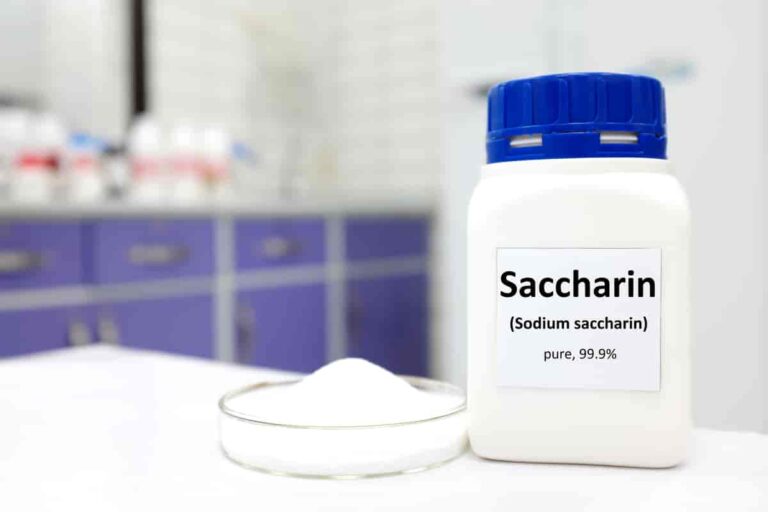Saccharin is one of the earliest synthetic sweeteners to be developed, first synthesized within the late 19th century. Known for its high sweetness depth compared to normal sugar, saccharin has won reputation as a calorie-loose sugar replacement for the ones trying to lessen sugar consumption. Found in numerous food plan merchandise and drinks, saccharin has had a charming records marked by clinical research, regulatory debates, and evolving public reviews. Though its journey has been complicated, saccharin remains widely used and serves as an vital topic in discussions round food technological know-how, fitness, and nutrients.
Discovery and Early History of Saccharin
The discovery of saccharin dates lower back to 1879 when chemists Constantin Fahlberg and Ira Remsen, running at Johns Hopkins University, by chance stumbled upon its extreme sweetness. Fahlberg observed the sweet taste on his fingers after a lab session and traced it lower back to the benzoic sulfimide compound they’d synthesized. This discovery brought about the improvement of saccharin as the first artificial sweetener. Despite its accidental discovery, saccharin quick located a place as a sugar alternative inside the early twentieth century, especially at some point of instances of sugar shortages in World War I. Its use turned into similarly promoted via the increasing call for for diet merchandise.
Chemical Composition and Sweetness Profile
Saccharin’s chemical shape is benzoic sulfimide, making it wonderful from different artificial sweeteners and sugar molecules. Its extreme sweetness is approximately 300-four hundred instances more potent than sucrose (desk sugar), that means handiest a minuscule quantity is wanted to sweeten meals and beverages. However, it has a barely sour aftertaste, specially in higher concentrations. This aftertaste is why saccharin is often blended with other sweeteners to balance its taste profile. The development of blends involving saccharin highlights its position in creating calorie-free or low-calorie sweetener alternatives and meeting purchaser possibilities for taste.
Health Impacts and Regulatory History
Saccharin’s fitness consequences were a subject of research and regulatory scrutiny. In the Seventies, animal research connected saccharin intake to bladder most cancers in rats, inflicting regulatory our bodies to impeach its safety. The U.S. Food and Drug Administration (FDA) first of all proposed a ban, but after public outcry, they allowed saccharin to live in the marketplace with a warning label. Over time, however, in addition research showed that the most cancers link in rats did no longer necessarily apply to humans, main to saccharin’s removal from the FDA’s listing of dangerous substances in 2000. Today, essential fitness businesses, along with the World Health Organization, deem saccharin secure for human intake while used inside recommended limits.
Saccharin in Modern Diets and Products
As an established synthetic sweetener, saccharin has maintained a significant vicinity in various meals and beverage products. It is specifically regular in eating regimen sodas, sugar-unfastened goodies, and baked items. In addition, saccharin is a popular preference in tabletop sweeteners, regularly determined underneath brand names like Sweet’N Low. The versatility of saccharin lets in it to cater to a huge variety of customers, from those handling diabetes to the ones on calorie-constrained diets. Despite the provision of newer sweeteners like aspartame and stevia, saccharin stays a cost-effective and powerful alternative in the artificial sweetener market.
Benefits and Drawbacks of Using Saccharin
Saccharin offers numerous advantages, along with zero energy, which supports weight management and diabetes manage. It does no longer boost blood sugar tiers, making it appropriate for diabetic patients. Moreover, saccharin’s balance at high temperatures makes it best for cooking and baking, unlike a few other sweeteners that lose their sweetness beneath warmth. However, the sour aftertaste is a exquisite downside, specially when used in large quantities. Additionally, some people file gastrointestinal pain after eating saccharin, although this impact varies amongst customers. Saccharin’s low production cost and long shelf life keep to make it a desired desire despite those drawbacks.
Saccharin’s Role in Science and Research
Saccharin has sparked hobby in various fields, no longer handiest in meals technology however also in medicinal and biochemical research. The synthetic sweetener has been used as a device to understand sweet flavor receptors and metabolic pathways. Furthermore, research are investigating its results at the gut microbiome, where synthetic sweeteners would possibly impact intestine bacteria and digestive fitness. Saccharin’s applications extend to the have a look at of non-caloric sweeteners in preferred, supporting scientists apprehend both the advantages and potential facet consequences of sugar substitutes. This studies maintains to steer regulatory and health pointers worldwide.
The Future of Saccharin and Artificial Sweeteners
The destiny of saccharin depends on evolving customer options, clinical findings, and technological improvements in food technological know-how. As the call for for sugar-loose and coffee-calorie products continues to develop, saccharin is possibly to remain in use, even though it could face opposition from more recent, plant-based totally sweeteners like stevia and monk fruit extract. Emerging studies on artificial sweeteners and their health affects, consisting of effects on metabolism and microbiome range, ought to form the position of saccharin in contemporary diets. Despite opposition, saccharin’s lengthy records, affordability, and regulatory attractiveness position it as a lasting presence within the world of synthetic sweeteners.
Conclusion
Saccharin’s journey from an unintended discovery to a staple inside the food industry highlights its significance as a calorie-unfastened sugar alternative. With its tremendous records, chemical specialty, and established safety profile, saccharin remains a precious ingredient in numerous nutritional merchandise. Although it has faced controversies and competitors, saccharin’s resilience and adaptability hold to maintain it applicable in a constantly changing market. As technological know-how and purchaser developments evolve, saccharin is probably to keep playing a role inside the quest for more healthy nutritional answers and sugar options.
